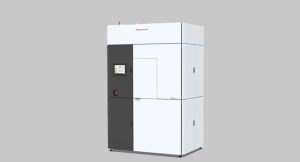Accelerating drug discovery research is the mission of a new advanced microscope developed by Thermo Fisher Scientific. Its Glacios 2 cryo-transmission electron microscope will be of great assistance to researchers of varying experience levels in the biopharma field. They’ll now have Glacios 2 and its various automated features to lend a hand in all sorts of processes, including parsing the structures of molecules, proteins, and cells using methods like single-particle analysis, cryo-electron tomography, and microcrystal electron diffraction.
Rapidly freezing biological samples via insertion into liquid ethane and subsequently preserving them using liquid nitrogen is the fundamental course of action in cryogenic electron microscopy, and Thermo Fisher saw potential for speeding up a process that essentially positions individual particles in place for weathering a microscope’s intense electron beam.
Glacios 2 automates a large majority of the set up for experiments, with functionality covering device alignment, sample cassette loading, and liquid nitrogen level and temperature management. The AI in play here is also critical to saving researchers time by taking charge of repetitive tasks, and a built-in algorithm called Smart Filter deselects areas of the hardware that have a chance of contamination.
With cryo-EM reaching its zenith of popularity in research settings, Glacios 2’s facility for high-throughput screening for structural imaging of druggable targets will be a gamechanger in the fast-moving biopharma field, particularly as the system can operate overnight in its 3D model construction.























